Brownstone Boys: Finishing and Protecting 130-Year-Old Wood
After seeing how great our woodwork looks natural there is no way we are going to repaint it.

We’re leaving notes for ourselves and team all throughout the place so nothing is damaged
Editor’s note: Welcome to the 41st installment of Brownstone Boys Reno, a reader renovation diary. We’re excited to publish their tale of buying and renovating a brownstone in Bed Stuy. See the first one here. They also blog at www.thebrownstoneboys.com.
A few months ago we wrote a post about the process of stripping layers upon layers of paint off our 130-year-old woodwork. The banister, door and window casings, and shutters are all original and were caked in paint. Poorly painted, we might add. Drips and globs everywhere.
We had it all stripped hoping we could at least get it to a point where it could be repainted without the many layers, drips and globs. We thought if we were lucky we could possibly leave some of it natural. Well we were lucky! Or we just had a very good paint stripper.
We were shocked when we saw the beautiful wood under all that paint. It hadn’t seen the light of day in decades and now its beauty is out in the open.
Now it’s time to continue the restoration process to repair and bring the wood back to life.
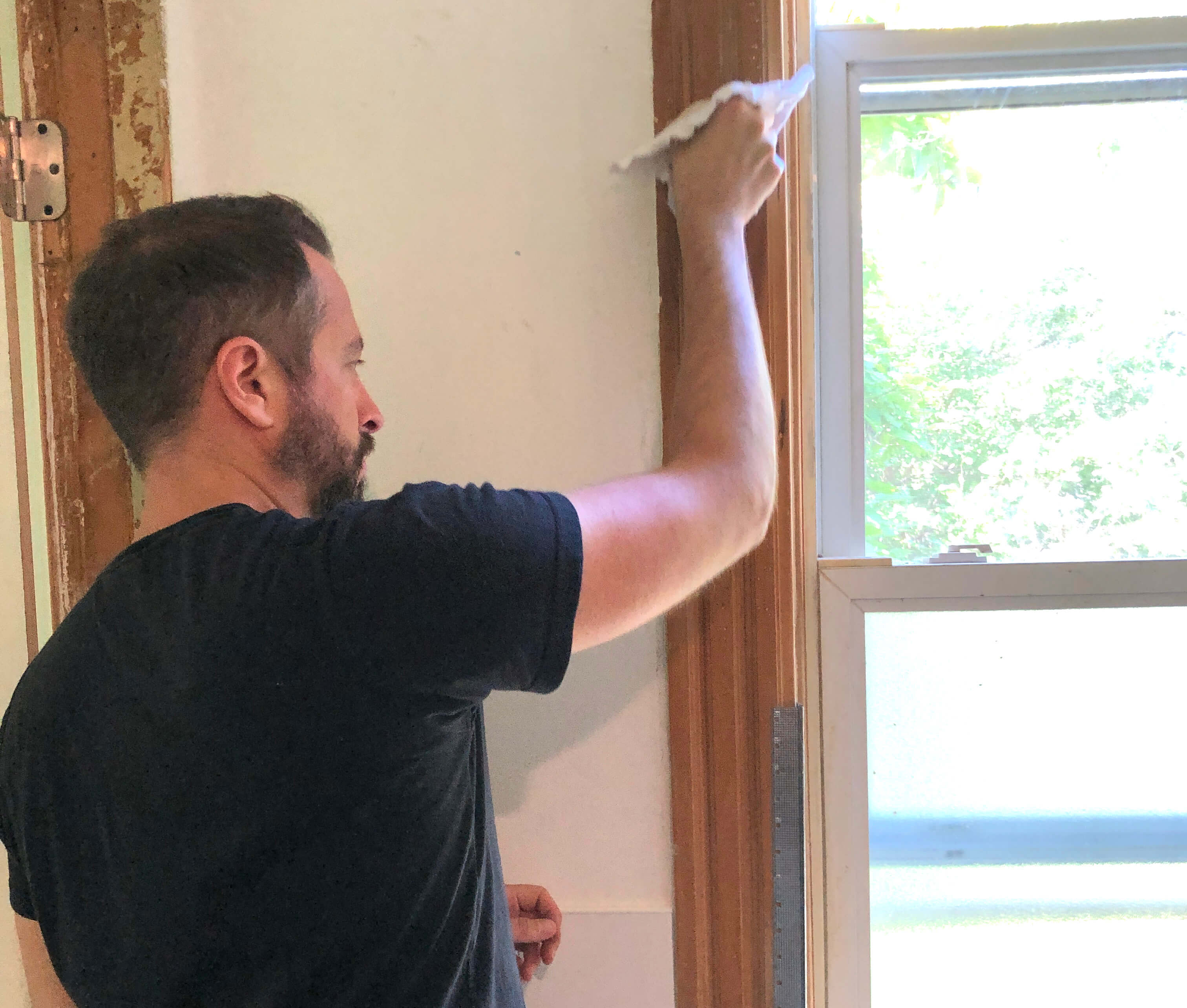
After seeing how great the wood looks natural there is no way we are going to repaint it. That left us with a little bit of a problem. There are some places where we needed to repair or replace part of it. That means we need to find or make matching pieces and match the wood color the best we can.
The first thing we wanted to address was the newel post. It unfortunately had some bad repair jobs over the years. Some pieces of moulding were missing or damaged. The entire thing also had a reddish tint either from a bad paint or stain job over the years, or because it looks to be a different type of wood from the mahogany banister and someone might have been trying to match it.
We had a very diligent and skilled specialist who worked on it methodically for a couple of weeks. He reproduced smaller pieces of molding, tediously sanded out the red color, and carefully stained the new wood to match the existing. It looks great! We can only imagine how many people this newel post greeted as they came through the front door during the 130 years it has been there. It’s amazing to see it shine again.
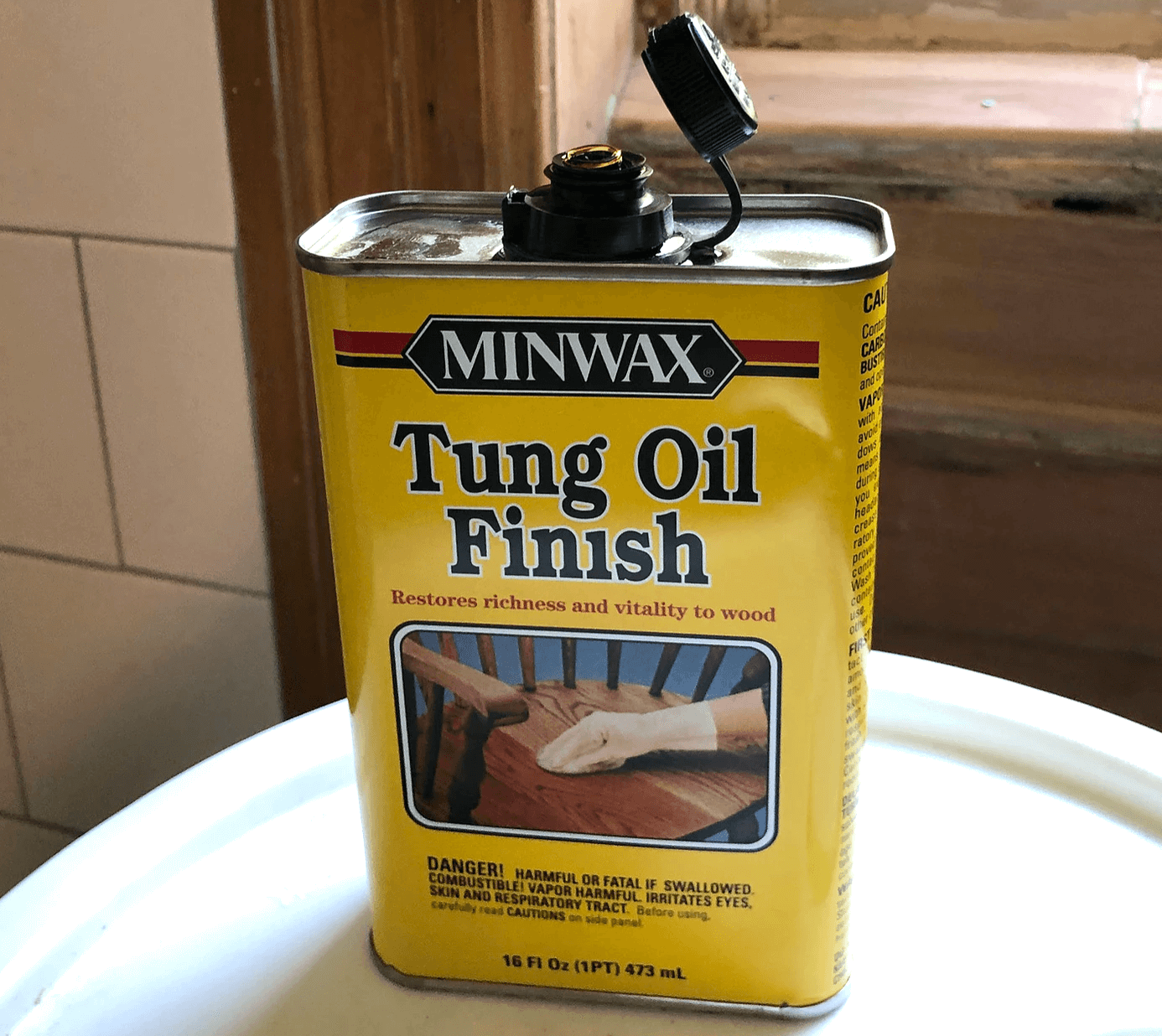
About 50 percent of our place has the original baseboards. They are made of two pieces. A lower 8-inch-high board with a decorative set of grooves running down it, and an upper rail. We were faced with the difficult choice of taking out what was there and replacing it all with something new.
We just really didn’t want to do that. Our goal has always been to restore as much as we could. Taking out so much original detail to replace it just wasn’t going to work. So we started looking around to see if we could have the original baseboards reproduced.
We went over to Adriatic Wood in East New York in Brooklyn with a couple of samples of our baseboard. We don’t think it’s unique. It’s probably very similar to many other Brooklyn houses built around the same time. They searched what they had in stock and unfortunately they didn’t have it.
We were left with only one option, having them reproduced to match. Adriatic has many “knives” on hand that can cut new pieces. If they didn’t have the knife for our molding already they would need to make one. For this to be an affordable option we needed them to have it. We left our samples there for them to search for a match. A couple of days later we got a call and they had it! Very affordably we were able to have our original baseboards re-created!
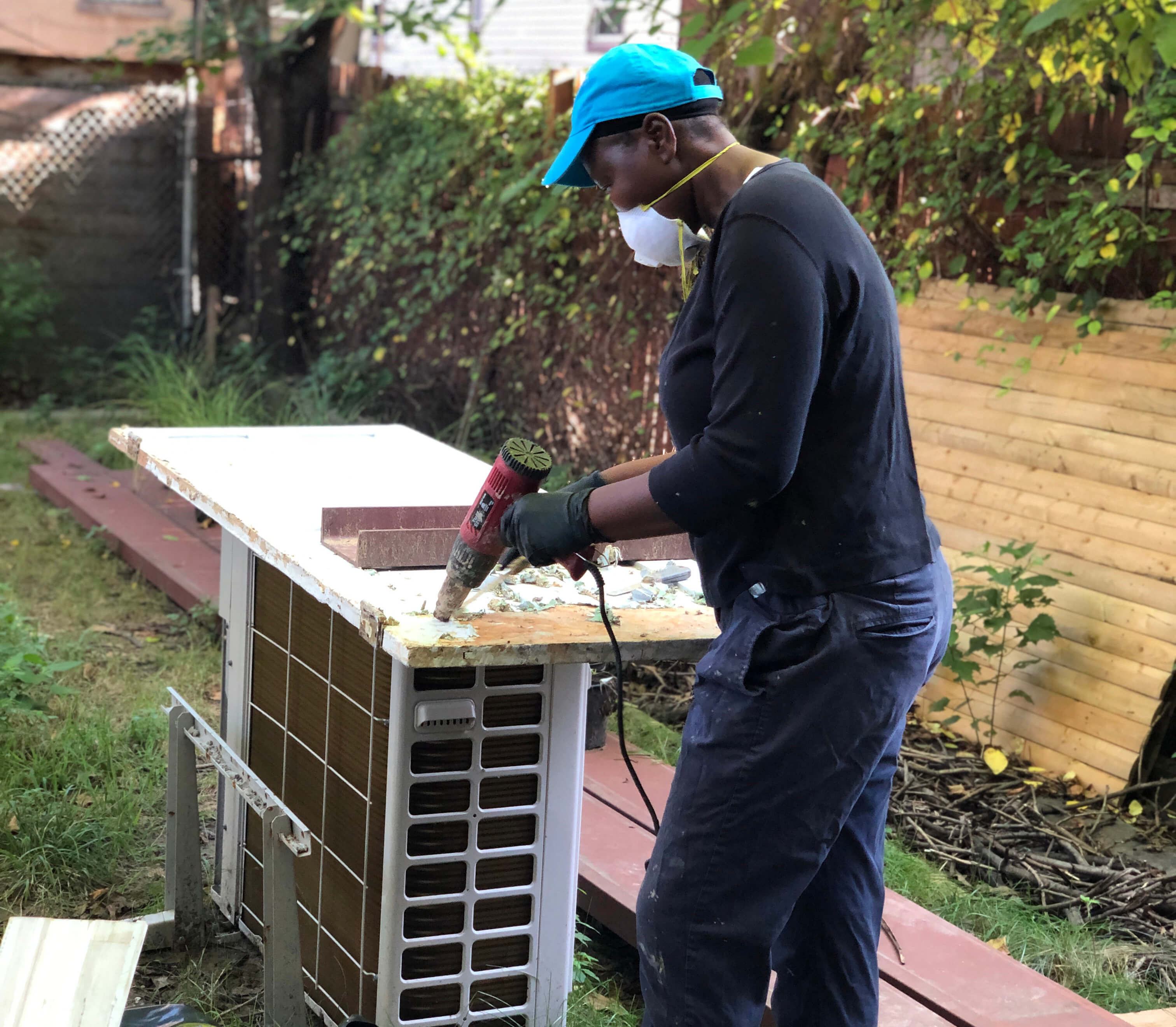
Then we had a new problem. We now have brand new wood baseboards to install next to 130-year-old baseboard. The wood would always be a different color. We are also aware of the amount of natural wood we are now going to have and didn’t want it to overpower the place. We decided we would paint all of the baseboards white while leaving the banister, original vestibule door, window casings and shutters, and door casings natural.
We were also missing a few spindles from the banister. They were hilariously replaced with much smaller and completely different off-the-shelf versions. We knew there was a small chance we could find some matching ones ripped out of some other poor brownstone at a salvage store, but Adriatic was able to spin us up some new ones on matching mahogany for a very reasonable price. We’re happy to say our banister is now complete!
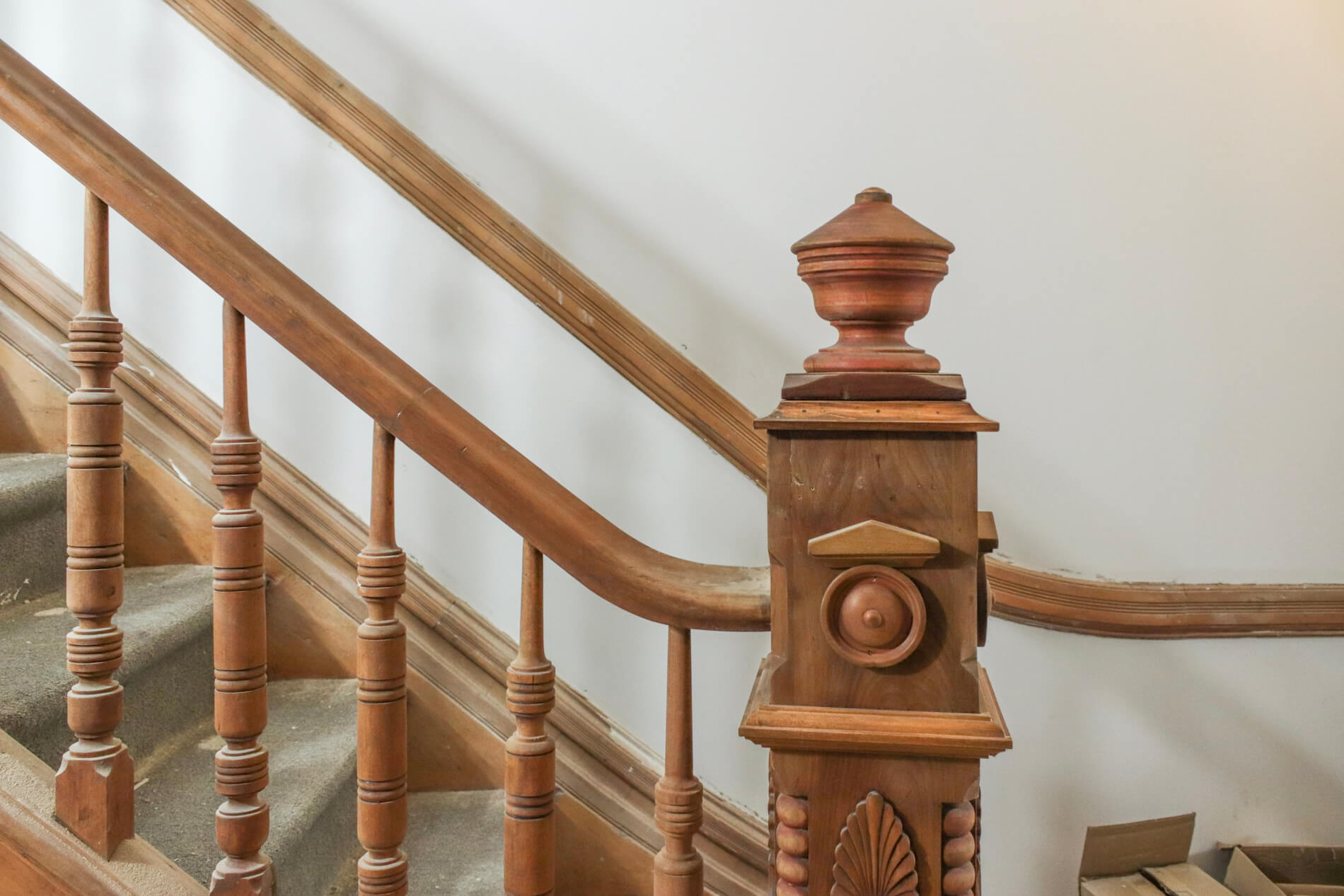
Our next step is to protect the wood we’re leaving exposed. We don’t want to put something on it that would change the color or make it shiny. Several people recommended tung oil as the best option. The paint stripping process left the wood needing a light sanding. So we sanded one of the window casings and tested the tung oil to see how it affected the wood. It came out great. It gave the wood a bit more depth but didn’t change the color or sheen.
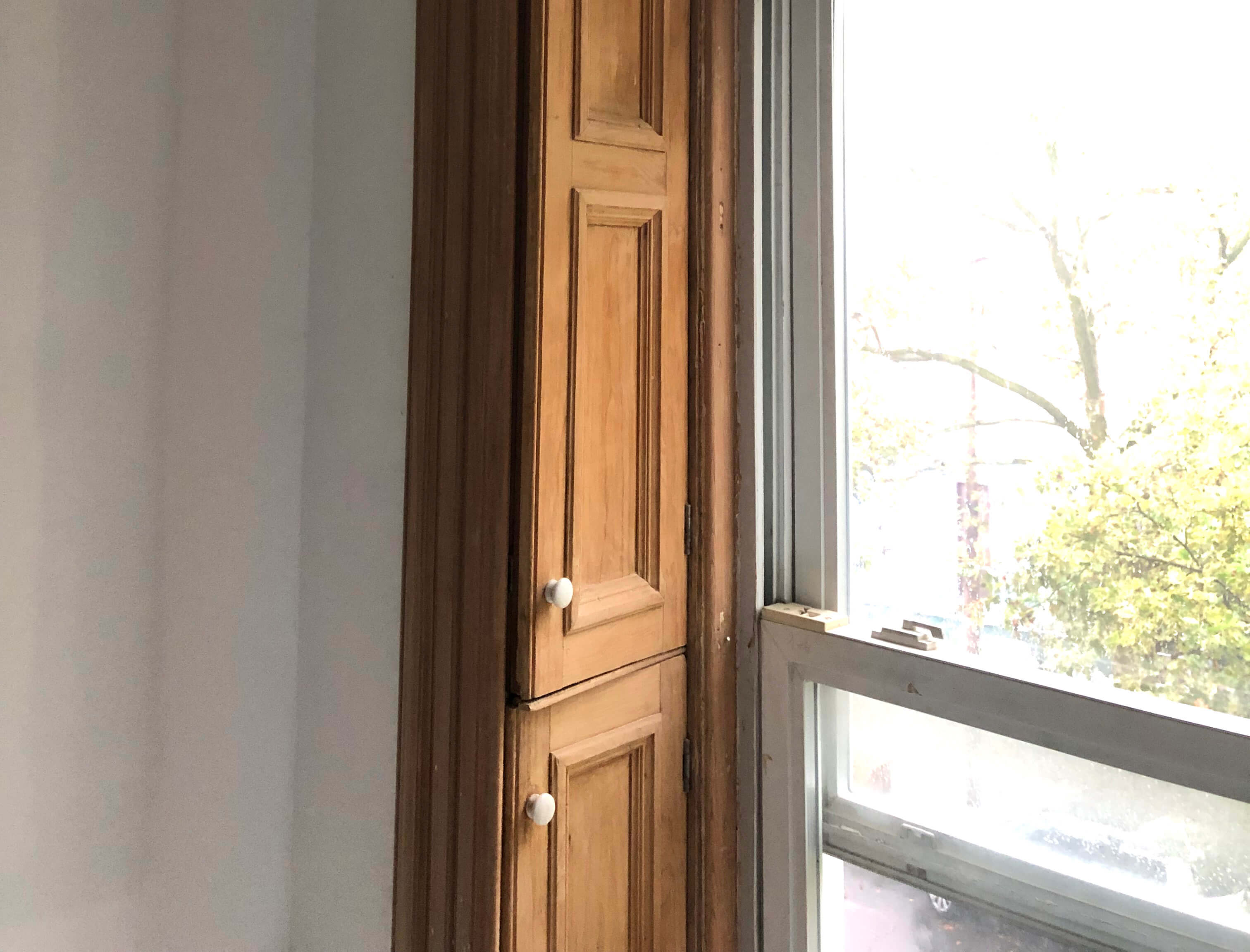
The next step will be for us to sand the rest of the window casings, door casings and window shutters. Then oil them all to protect and bring them back to life. Our work is cut out for us.
The entire process took a lot of money, time and effort but we already see it paying off. The original wood is now one of the best features in our place. We’re so happy to see it out from under all of that paint and we know it’s going to look beautiful for years to come. The natural way.
[Photos via Brownstone Boys]
Related Stories
- Brownstone Boys: Choosing the Right General Contractor for Your Renovation
- Brownstone Boys: Budget Friendly Options for Adding Deck Access to a Brownstone
- Brownstone Boys: Moving Up
Email tips@brownstoner.com with further comments, questions or tips. Follow Brownstoner on Twitter and Instagram, and like us on Facebook.





What's Your Take? Leave a Comment